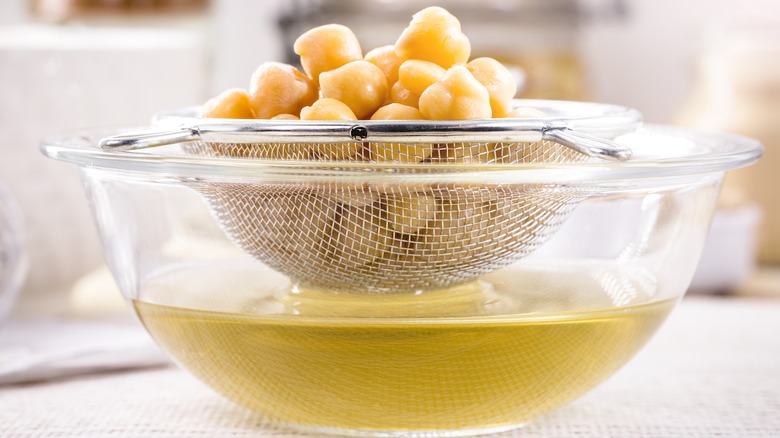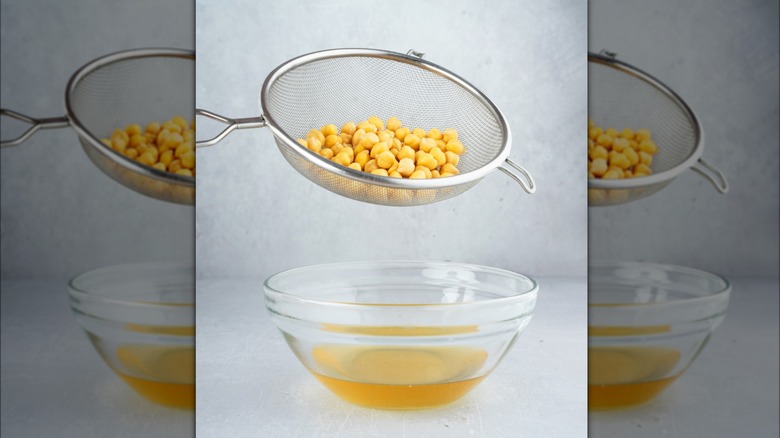Mistakenly Thin Out Your Soup Broth? Thicken It Up With Aquafaba
Mistakes happen in the kitchen. Sometimes we're preoccupied. Forgetting to remove a dish from the oven might not be a redeemable oopsie. However, adding too much liquid to your soup, broth, or stock isn't an unfixable offense. In fact, there are several ways to thicken up your soup. You can add rice, bread, potatoes, beans, flour, cornstarch, and more. One method that has become increasingly popular is using aquafaba.
Aquafaba is the wondrous ingredient that has become more prevalent over the last decade. Since it can be used as a substitute for egg whites, vegans love the stuff. Aquafaba is the starchy liquid that beans have been cooked in. That viscous fluid you find when you open a can of chickpeas is aquafaba.
Because of its high starch content, aquafaba is a natural thickening agent. If your soup, broth, or stock is too watery, simply pour in the aquafaba and let it simmer. After just a few minutes, you will see aquafaba work its magic as your recipe thickens.
How does aquafaba thicken soup?
The reason aquafaba works so well is because it is a starchy liquid. A starch is very good at absorbing water and other liquids. When you heat liquids, the molecules become agitated and move around rapidly. When they collide with starch, the starch absorbs the water to thicken any recipe that contains water. This makes aquafaba a highly versatile thickening agent that can be used in soups, broths, and stocks.
While aquafaba can technically be made from other legumes, chickpeas create the starchiest results. They are also the most neutral tasting. These two traits combine to make chickpeas the go-to aquafaba legume.
The easiest way to get aquafaba is to pour it from a can of chickpeas. However, you can also make it from scratch. To do this, simmer the leftover liquid in your pot after cooking chickpeas. In about 30 to 45 minutes, it will thicken and turn yellow. If not used immediately, it can be stored for up to five days in the refrigerator. Frozen aquafaba, on the other hand, can last several months.

